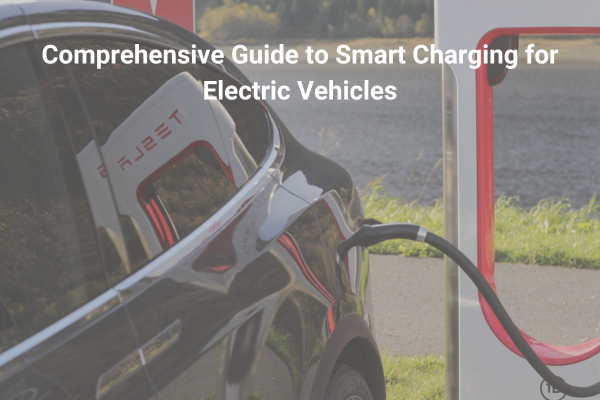Comprehensive Guide to Smart Charging for Electric Vehicles


In this blog, we will explore the revolutionary technologies that are shaping the landscape of electric mobility and propelling us toward a sustainable transportation ecosystem.
Battery Innovations:
At the core of electric vehicles (EVs) lies battery technology, and recent advancements have brought about significant breakthroughs. Solid-state batteries and lithium-air batteries show promise in delivering higher energy density, longer ranges, and faster charging times. These innovations address the key concerns of EV owners, such as range anxiety and lengthy charging periods. With improved battery technologies, the adoption of electric vehicles is set to accelerate across industries.
Charging Infrastructure:
To support the widespread adoption of electric vehicles, a robust charging infrastructure is vital. The development of fast-charging networks and high-power charging stations is transforming the charging experience. These stations enable EVs to charge quickly, making long-distance travel more feasible and convenient. Wireless charging technologies are also being explored, eliminating the need for physical connections and offering seamless and hassle-free charging experiences.
Autonomous Driving:
The convergence of electric mobility and autonomous driving technologies is a game-changer in the transportation industry. Electric vehicles equipped with autonomous driving capabilities can revolutionize transportation by improving safety, efficiency, and accessibility. The integration of artificial intelligence, sensors, and connectivity enables self-driving electric vehicles to navigate roads with precision and make real-time decisions. This combination promises a future where transportation is electric and autonomous.
Vehicle-to-Grid (V2G) Integration:
Electric vehicles can contribute to a sustainable energy ecosystem through Vehicle-to-Grid (V2G) integration. This technology allows EVs to serve as energy storage units, enabling bidirectional energy flow between the vehicles and the power grid. EV owners can use their vehicles to store excess energy during off-peak hours and then discharge it back to the grid when demand is high. V2G integration helps stabilize the grid, reduces strain during peak periods, and facilitates the integration of renewable energy sources.
Lightweight Materials and Design:
Efficiency is a key aspect of electric mobility, and lightweight materials play a crucial role. Carbon fiber composites, aluminum alloys, and other lightweight materials are being used in the construction of electric vehicles. These materials reduce the overall weight of the vehicle, improving energy efficiency and extending the range. Additionally, aerodynamic design principles are employed to minimize air resistance, further optimizing energy consumption. By leveraging lightweight materials and innovative designs, electric vehicles are becoming more efficient and practical for everyday use.
Connected and Smart Mobility:
Connectivity and IoT technologies are transforming the way we interact with electric vehicles. Smart mobility solutions, such as ride-sharing platforms and intelligent transportation systems, enhance efficiency, reduce congestion, and improve overall transportation experiences. Real-time data and connectivity enable seamless integration between vehicles, infrastructure, and users. Electric mobility is becoming part of a connected ecosystem, facilitating efficient transportation and enhancing user convenience.
Conclusion:
The future of electric mobility is powered by revolutionary technologies that are reshaping transportation as we know it. Battery innovations are pushing the boundaries of energy density and charging speeds, while advancements in charging infrastructure are making EVs more practical and accessible. Autonomous driving and V2G integration are revolutionizing the way we think about transportation and energy management.
Lightweight materials and smart mobility solutions are enhancing efficiency and convenience in electric mobility. As these technologies continue to evolve, the electric mobility revolution will gain momentum, paving the way for a sustainable and efficient transportation future. It's an exciting time to witness the transformation of electric mobility and embrace the revolutionary technologies that will shape the future of transportation.